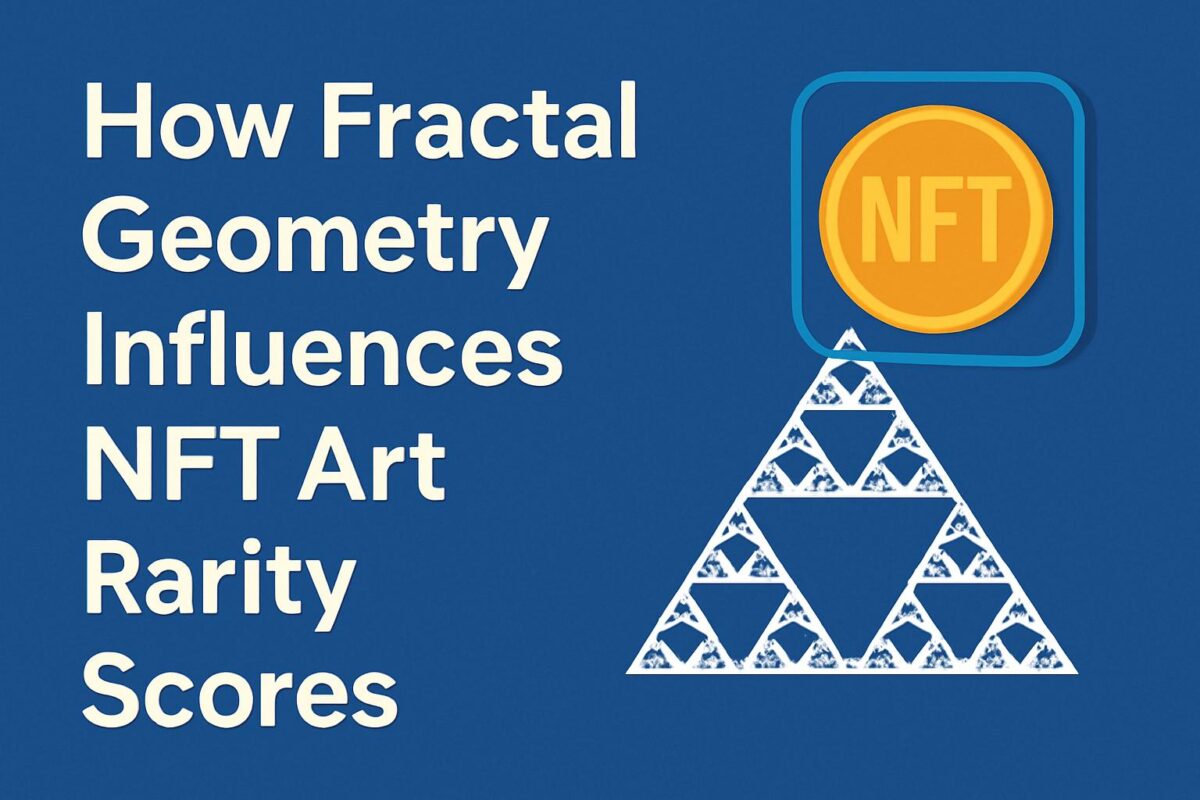How Fractal Geometry Influences NFT Art Rarity Scores
Introduction
NFTs have opened a new frontier where math meets creativity. But what if the secret to understanding and predicting NFT art rarity lies in nature’s most intricate patterns, fractals? As rarity scores play an essential role in NFT valuation and trading, creators and platforms are now turning to fractal geometry to bring precision, uniqueness, and aesthetic depth to digital assets. In this blog, we unpack how fractal-based NFT math models are revolutionizing digital rarity systems, and why they might be the future of NFT valuation techniques.
The Role of Rarity in NFT Valuation
NFT art rarity directly affects price, demand, and collector appeal. Traits like background, color palettes, and accessories are weighted and scored through rarity algorithms. However, these systems often lack mathematical depth, especially when evaluating abstract or generative art. That’s where geometry-based models shine.
Fractal geometry, known for its self-similar, complex patterns, offers a quantifiable and visual method for analyzing uniqueness at scale. Fractals can evaluate not just metadata, but the aesthetic structure of the art itself.
Fractal NFTs: A New Mathematical Lens for Ranking
Fractal NFTs apply principles like the Mandelbrot set and Julia set to create art that has mathematically defined complexity. These self-replicating patterns help rank NFTs based on intrinsic structure rather than arbitrary trait counts.
Key applications include:
- Geometry-based NFT ranking for generative collections
- Fractal dimension scoring for visual uniqueness
- Metadata pattern analysis using recursive algorithms
Platforms now explore ways to plug these scores directly into blockchain rarity scoring systems.
ALSO READ: The Neuroscience of NFT Ownership: and why it Matters.
NFT Math Models: Beyond Traits and Colors
Modern rarity algorithms now include:
- Fractal entropy: Measures pattern unpredictability
- Self-similarity indices: Detect repeating but unique visual components
- Rarity clustering: Groups NFTs based on geometric features
These NFT math models expand digital rarity systems by evaluating visual complexity in addition to metadata values.
Metadata and Geometry: A Hidden Value Layer
Many NFTs already include structured metadata for rarity scoring, but fractal-informed models go deeper. For example:
- Image recognition AI detects fractal symmetry
- Metadata fractals, such as nested visual traits, create a multi-layered valuation
- Blockchain art value is influenced by geometry that mimics natural or mathematical beauty
This adds a hidden value layer that resonates with art collectors and data-driven investors alike.
Predicting Rare NFTs with Geometry-Based Tools
Emerging tools in the NFT space now utilize:
- Real-time fractal analysis of uploaded art
- Generative art screening based on geometry
- Predictive rarity models using visual math signatures
These tools empower platforms to suggest high-value NFTs before they go viral.



FAQs
Q1: How do fractals improve NFT rarity scoring?
A1: Fractals provide measurable visual complexity, enhancing the precision of rarity models beyond simple trait counts.
Q2: Can fractal geometry be applied to existing NFT collections?
A2: Yes. Tools can retroactively analyze images and metadata to assign geometry-based rarity scores.
Q3: What makes fractal NFTs unique?
A3: They combine mathematical structure with creative design, producing infinite variation with intrinsic visual appeal.
Q4: Are NFT investors using fractal models yet?
A4: Early adopters and generative art platforms are integrating fractal-based tools to predict future value.
Call to Action (CTA)
🎨 Ready to explore the science behind NFT rarity? Subscribe now for in-depth guides on math-driven NFT valuation, fractal art, and predictive ranking models.
